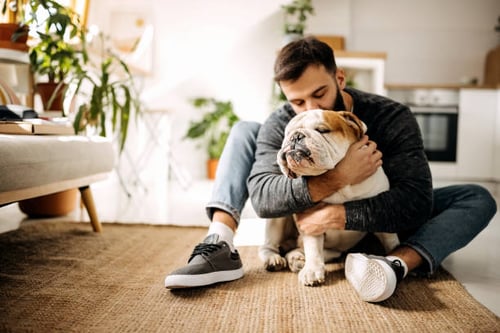Separation anxiety in dogs is a topic of great concern for pet parents and pet-care businesses alike. As professionals in the pet-care industry, understanding and addressing this issue can make a significant difference in the lives of our canine clients and their families. Let's delve into what separation anxiety is, its signs, and how pet-care businesses can assist in managing it.
What is Separation Anxiety in Dogs?
Separation anxiety occurs when a dog becomes overly attached to their owner and exhibits distress in the owner's absence. This can manifest as destructive behavior, incessant barking, or even attempts to escape.
Signs of Separation Anxiety

- Destructive Behavior: Chewing on furniture, tearing up items, or scratching at doors and windows.
- Inappropriate Elimination: Urinating or defecating inside even if they're house-trained.
- Excessive Vocalization: Barking, howling, or whining for extended periods.
- Pacing or Restlessness: Some dogs might pace in a set pattern or path when left alone.
- Salivation or Panting: Some dogs might drool excessively or pant when anxious.
- Escape Attempts: Some dogs might try to escape confined areas, leading to potential self-injury.
How Pet-Care Businesses Can Help
-
Provide Information and Resources: Offer brochures, workshops, or even webinars addressing separation anxiety. The more informed your clients are, the better they can tackle the issue.
-
Structured Play & Exercise: An active dog is less likely to experience high levels of anxiety. Doggy daycare centers or boarding facilities can offer structured playtimes to ensure dogs are mentally and physically stimulated.
-
Training Classes: Collaborate with professional dog trainers to provide training sessions specifically for separation anxiety. This can include techniques to desensitize the dog to being alone or building positive associations with alone time.
-
Create Comfortable Spaces: If you run a boarding facility or daycare, ensure that each dog has a comfortable, personal space. Familiar items from home, like toys or blankets, can help soothe an anxious dog.
-
Calming Solutions: Stock or suggest products that can help alleviate anxiety. These can range from calming sprays, CBD products for pets, or even anxiety wraps.
-
Recommend Professional Help: In severe cases, dogs might need the expertise of a veterinary behaviorist. Always have a list of recommended professionals for pet parents to consult.
-
Stay Updated: The field of canine behavior and psychology is ever-evolving. Regularly update your knowledge and keep abreast of the latest techniques and findings to provide the best care possible.
Separation anxiety can be a challenging issue for dog owners to navigate, but with the support of knowledgeable pet-care businesses, it becomes a manageable task. By understanding the signs and offering solutions, we can play a pivotal role in enhancing the well-being of our furry friends and fostering lasting relationships with our clientele.
Remember, every dog is unique, and what works for one might not work for another. It's always about finding the right balance and strategy for each individual pup. Let's work together to ensure every dog feels safe, secure, and loved, even in the absence of their beloved human.
Start a free trial with Revelation Pets now to see how much easier managing your business can be!






